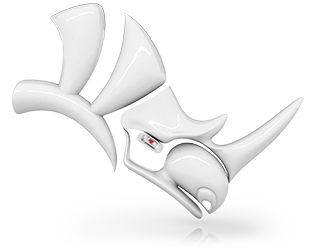.NET Core vs .NET Framework
Windows only
Rhino 8.20 uses .NET Core 8 by default, and Rhino 8.19 or older uses .NET Core 7 by default.
On Windows, some older plug-ins will not run when .NET Core is active, and requires the legacy .NET Framework, instead.
To change Rhino to always use .NET Framework:
- Start Rhino for Windows
- Type the command SetDotNetRuntime
- Select the Runtime option
- Set the NETFramework option
- Close Rhino
To change Rhino to always use .NET Framework using the Registry:
- Run RegEdit
- Browse to HKEY_CURRENT_USER\Software\McNeel\Rhinoceros\8.0\Global Options
- Create a REG_SZ value named DotNetRuntime and set its data to netfx
To start Rhino in .NET Framework once:
Caution: only recommended if you have a plug-in that doesn’t run in .NET Core.
- Create a new shortcut for Rhino in Windows
- Edit the shortcut
- Add command line argument /netfx
To start Rhino in .NET Core once:
- Create a new shortcut for Rhino in Windows
- Edit the shortcut
- Add command line argument /netcore
.NET Core Version
Starting with version 8.12, you can select the version of the .NET Runtime that it will use instead of its default.
Please note that Rhino 8 does not currently support running on .NET 9 (or later) Runtime, and only supports .NET 7 and 8.
Installing the .NET Desktop Runtime:
In order to use a different version of .NET Core than the default, you must first install the .NET Desktop Runtime.
- Open your browser to https://dotnet.microsoft.com/en-us/download/dotnet
- Click on the version of .NET you wish to use
- Download the .NET Desktop Runtime for x64
- Run the downloaded installer to install the runtime
To set the .NET Core version once:
- Create a new shortcut for Rhino in Windows
- Edit the shortcut
- Add command line argument /netcore-8, or /netcore-7
To set the .NET Core version using the Registry:
- Run RegEdit
- Browse to HKEY_CURRENT_USER\Software\McNeel\Rhinoceros\8.0\Global Options
- Create a REG_SZ value named DotNetCoreVersion and set its data to 8 or 7
For more details:
For more details, visit our developer documentation for .NET 7.

